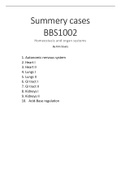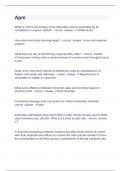Samenvatting
Summary Food Safety Risk Assessment FHM-30306
- Vak
- Instelling
GRADE: 7. This document is a summary of the course Food Safety Risk Assessment (FHM-30306). It includes lectures on Microbiology (weeks 1 through 3) and Toxicology (weeks 1 through 3). Please note that this summary was written during the 2022/2023 academic year, and the content may have changed sin...
[Meer zien]












